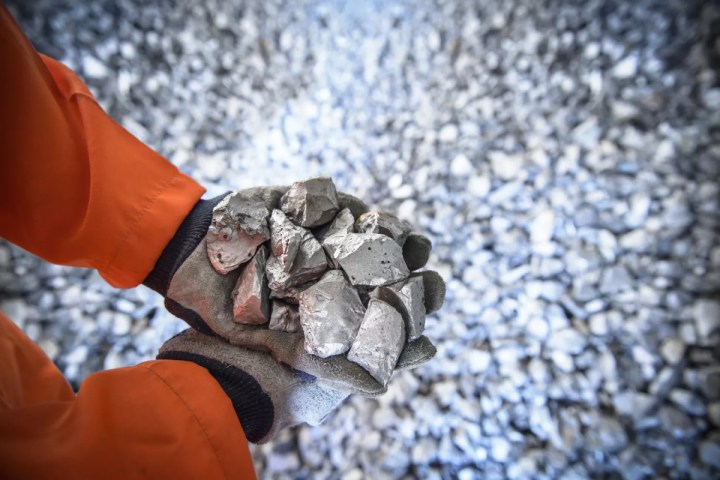The iPhone 15 Pro is the first iPhone to feature “aerospace-grade titanium construction, made from the same alloy used by spacecraft on missions to Mars.” The company highlights this fact by suggesting that it is superior to other features such as cameras and software features. However, the question arises as to the real usefulness of this change. He titanium on mobile phones brings something significant or is it just Marketing strategy?
The use of titanium has significant advantages over other metals such as aluminum and stainless steel. In Apple’s case, the move to titanium resulted in the lighter iPhone 15 Pro series, an improvement over the relatively heavy iPhone 14 Pro. Additionally, Samsung has joined the trend with its Galaxy S24 Ultra, ditching the durable aluminum frame in favor of a more premium and durable metal.
Aluminum vs. titanium
But to find out how this change will specifically impact the user experience, it’s a good idea to delve deeper into the differences between aluminum and titanium.
Aluminum has long been a traditional material for the iPhone case. This material is widely used and due to its properties is also found in kitchen utensils, aircraft parts, outdoor equipment and other electronic devices. It is lightweight, durable, ductile and corrosion resistant. However, while overall this is a great material, it does have some disadvantages.
Because he is a good driver, aluminum may be uncomfortable to hold in extreme temperatures, whether high or low. It is also softer than some other metals, meaning it is easier to scratch and dent. The process of extracting aluminum requires a lot of energy and has a negative impact on the environment, but the same is true for titanium.
On the other side, titanium It has been used in human implants because of its biocompatibility, as well as in aircraft, spacecraft, jewelry, eyewear, outdoor equipment, and electronic devices. Compared to aluminum, It is much stronger and more durable. In fact, it is as strong as steel, but almost 50 percent lighter.
Titanium has greater corrosion resistance than aluminum and can withstand more extreme temperatures. Titanium products last longer than aluminum products. Although, when it comes to the manufacturing process, aluminum takes the cake as it is much easier to handle, cut and shape than titanium.
When using titanium in the production of mobile phones, we strive to achieve a balance between weight and resistance, which allows you to make devices more durable and durable without significantly increasing their weight. Additionally, the use of titanium is often cited as an advantage due to the material’s properties and its association with quality and strength.
Is titanium really the most important thing in new phones?
I agree, titanium is cool, and this change reflects the ongoing search for innovation and quality in high-end mobile device design. But is there any need for fuss about this? What about the other features the new phones are getting? Titan, of course, is not everything.

Even more impressive is the fact that 11 years later, every new iPhone 15 model has USB-C port instead of Lightning. The first devices with a USB-C charging port appeared in 2015. And now it is almost everywhere: Android phones, laptops, wireless headphones, game consoles, PC monitors and even electric scooters. However, the longest resistance was provided by the iPhone.
Even though Apple has built a USB-C port into every new MacBook and iPad in recent years, Apple has decided to continue using its own Lightning connector for its smartphones. Until now, all iPhone models since 2012 have used Lightning.
In Samsung’s case, the new generation of Corning Gorilla Glass is impressive. Samsung Galaxy S24 Ultra this year will be the first smartphone equipped with the new Gorilla Armorwhich Corning claims is four times more resistant to micro-scratches and daily wear and tear than conventional aluminosilicate glass, also known as mineral glass.
Additionally, Gorilla Armor has 75 percent less reflection than regular mineral glass, increasing its optical clarity. This innovation follows the trend of screens used in recent TVs where light virtually disappears, with no reflections or anything like that. This aspect should probably be emphasized much more than the titanium frame.
It’s also important to note that for those who usually use a protective case, the fact that the phone is made of titanium is completely unimportant. It doesn’t matter if the phone is made of plastic, glass or metal; If it’s in a case, everything you see will be rubber and polycarbonate anyway.
Titanium in cell phones: real benefit or marketing ploy?
Now to answer the question of whether titanium adds anything significant to phones or is it just a marketing strategy, the answer is both. On the one hand, titanium has the advantage of being lightweight and strong, although an iPhone strength test may show otherwise.
However, its implementation is also, without a doubt, brand strategy. Just look at the iPhone 15 Pro Max campaign and ad highlighting this feature, not to mention the phone’s other new features.
Some people will still buy the iPhone 15 Pro and Galaxy S24 Ultra just because they’re made of titanium, and that’s true. And yes, phones made from this material look stylish, but that’s probably not a good enough reason to spend more than $1,000 on a smartphone.
The build material should be seen as complementary to other important aspects of the phone, be it the cameras, software features, or how they integrate with the rest of the technology. The titanium frame should really only be considered as icing on the cake.
Source: Digital Trends









